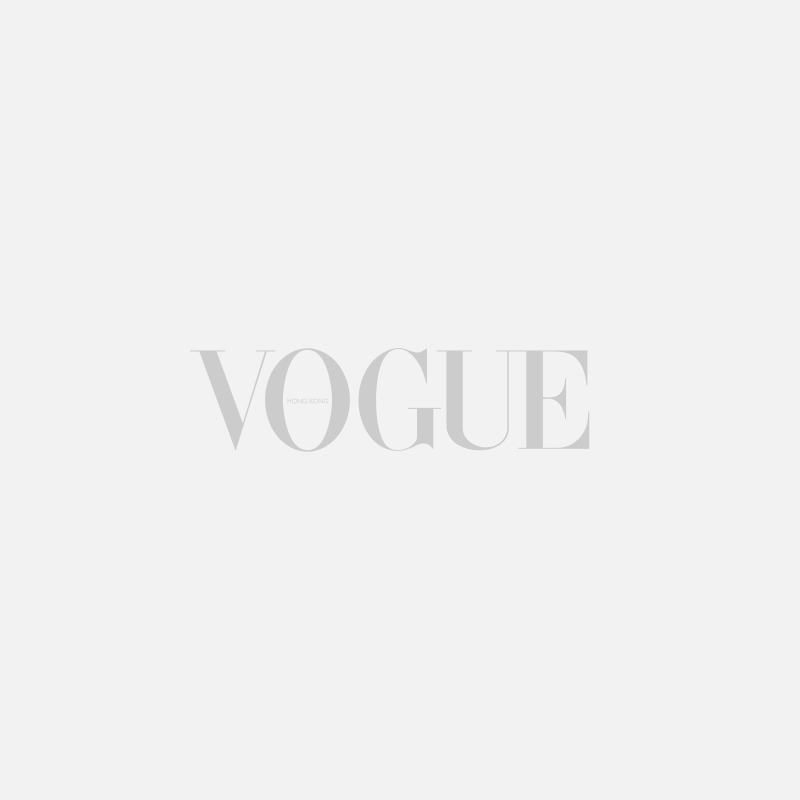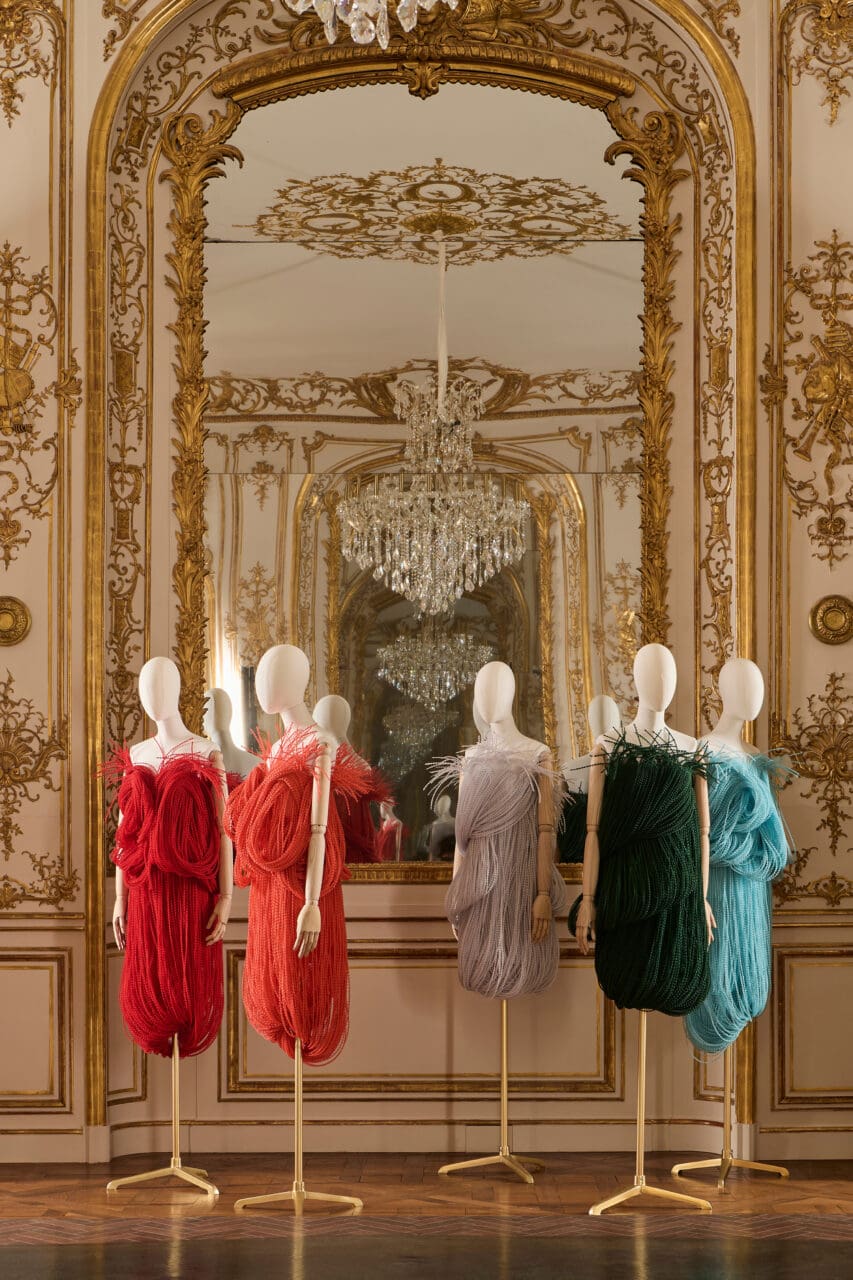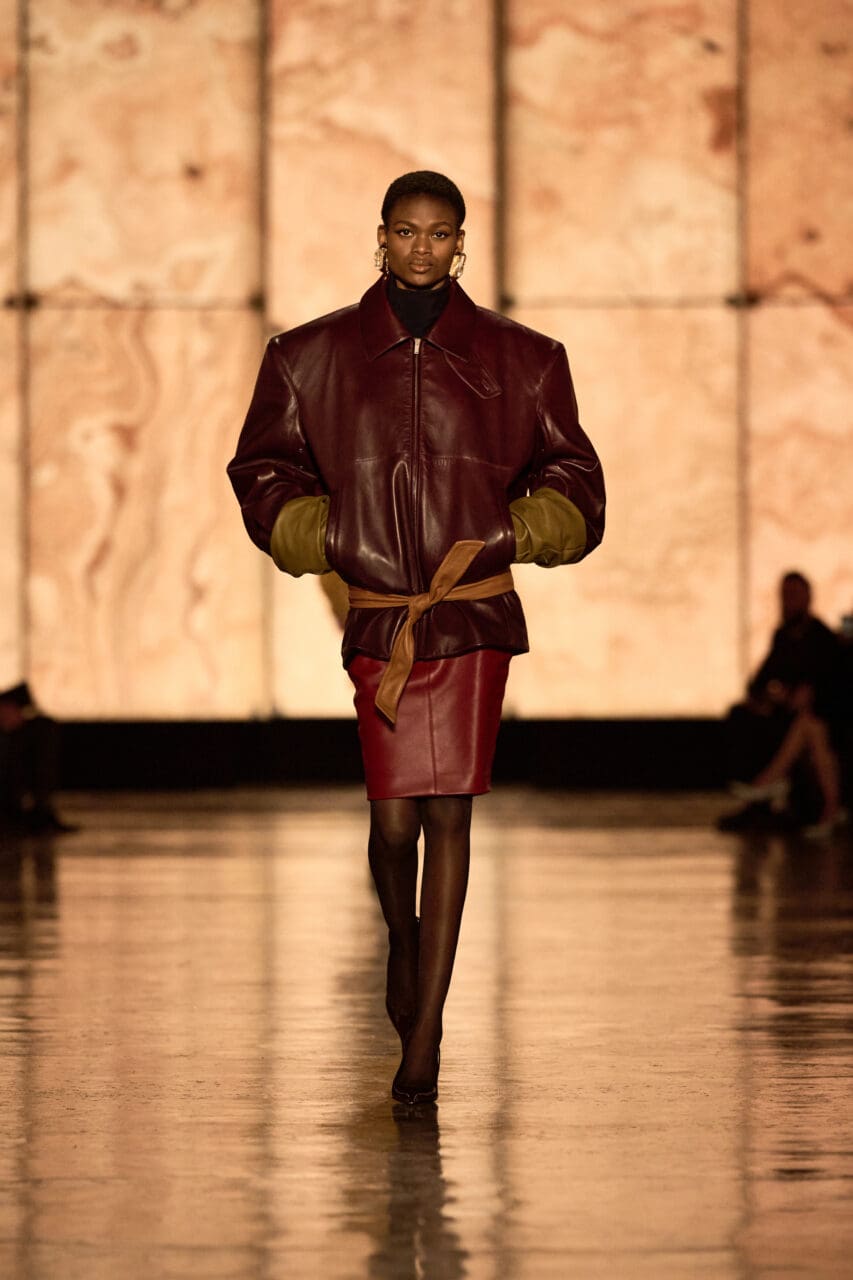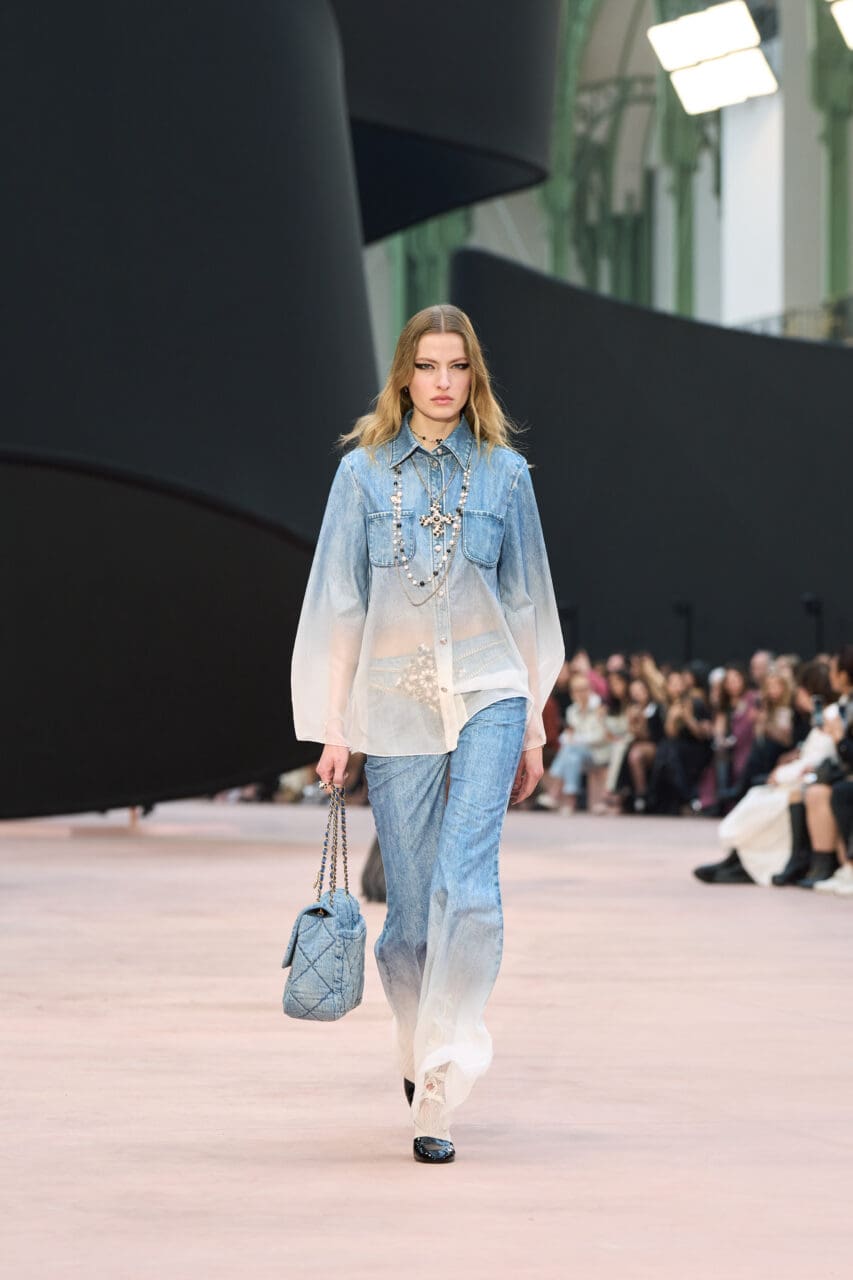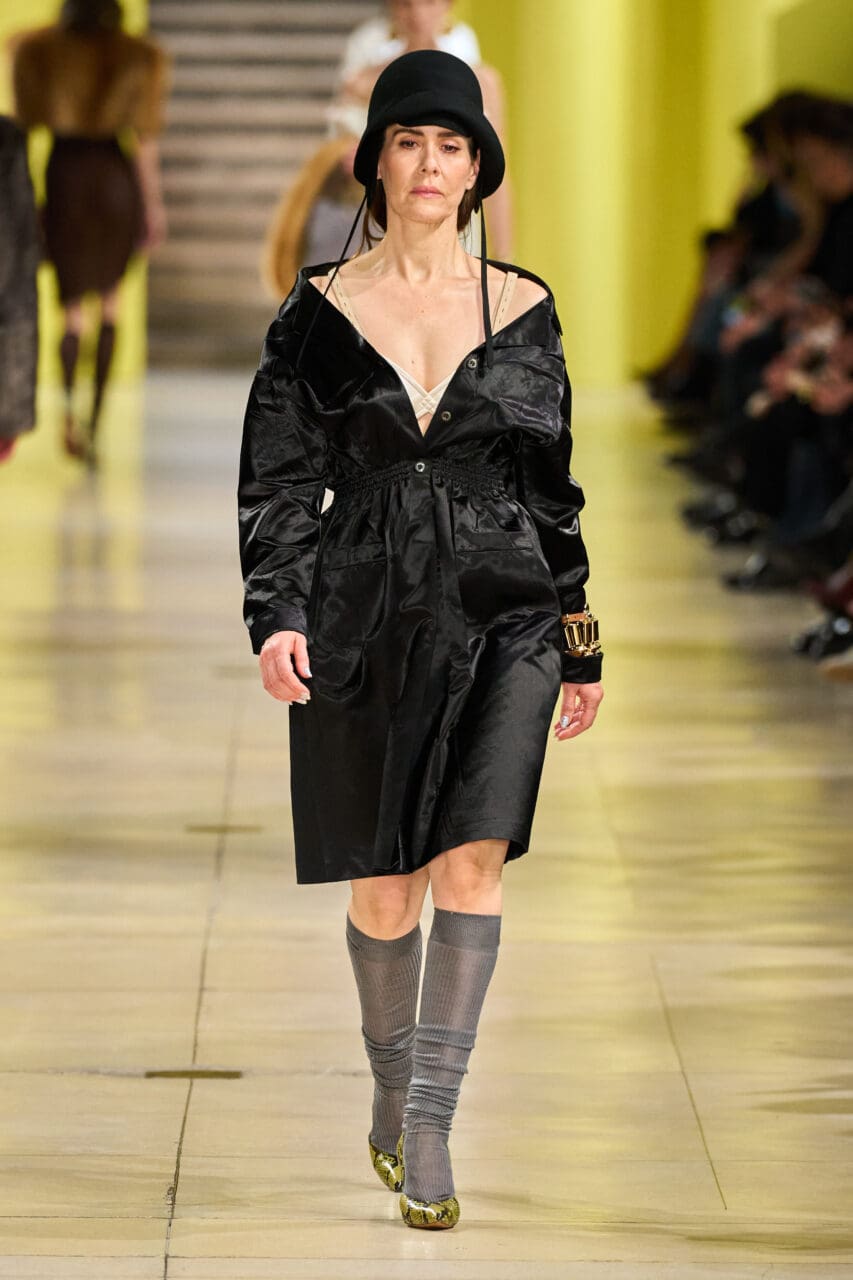“Playing with color for me is like dancing. And when the outfit is done, that’s my wave.” Sabato De Sarno was merrily mixing his metaphors before a Gucci show this afternoon that demonstrated his steadily increasing assurance at this rhetoric-buffeted house. Today’s surfwear theme—this collection’s most eye-catching departure—was less a metaphor and more a simile that expressed shared currents. These ran between De Sarno’s lifelong passion for galleries and museums and something he said he detected in the William Finnegan memoir Barbarian Days: “He spends his 20s traveling around the world surfing, having many experiences and encounters with different people, and these are what help him to discover his own sense of freedom.” Just as Gucci’s most recent resort show was held at Tate Modern in London, this spring menswear collection—De Sarno’s first here—was shown at Milan’s Triennale di Milano.
The Triennale is currently showing an exhibition about the work of designer Gae Aulenti, one of whose quotes was pinned to De Sarno’s mood board: “Tradition is not something that is inherited but is built day by day.” Here you could detect multiple fresh layerings of elements already established during the designer’s not-quite year at the house. These dwelt in the opening leather coat’s same so-called rotten green we saw in fall ’24; a neoprene surf slipper gridded in the same 3D interlocking-G mesh we saw in ballet flats at Tate Modern; and the designer’s ongoing commitment to a short-short. This last theme was most enjoyably unconventional when styled against the closing tailored jackets, cut in breezy cotton poplin and constructed with a lightness that betrayed De Sarno’s Neapolitan identity.
The print, though, was an entirely new De Sarno x Gucci departure. There were three variations, all in multiple colorways; they featured palms, dolphins, or hibiscus leaves. Even when short-sleeve, the camp-collar shirts were stitched with a patch pocket by each hip in order to echo the profile of a chore jacket. De Sarno sometimes edged them in beaded fringe, other times delivered elements of the print in a brocade, and even on occasion dropped the whole design in embroidered beads. The long-sleeve chore jackets in the less zhuzhed-up prints were especially on my wavelength.
Sometimes the print also broke through on T-shirts worn under camp-collar shirts delivered in either decreasingly widening tiers of fringe or forward-facing paillettes. The hibiscus variation was translated into a beautiful jacquard on indigo denim. Polo shirts were layered under oversized double-G work shirts with a beautiful couture-ish curve to the back and not-quite hot pants. The harmonic turbulence between competing colors in these looks was a testament to De Sarno’s opening statement.
Accessory-wise, De Sarno and his team shredded through that surf-inspired theme. From the spongy sunglass straps to the squidgy-soft fluoro-patent crossbody bags, radical color abounded. Necklaces and other jewelry were segmented into bamboo-shaped links. A group of bags were delivered in modular clusters connected by gleaming hardware and Gucci surfer charms. The extent to which this was not a literal surfing collection—almost entirely—was probably best expressed by the handsome but beach-impractical almond-toe horsebit boot. The neoprene slippers were closer to the theme yet were more meaningfully used here to give fresh traction to this designer’s increasingly deft explorations of both commonality and friction across contemporary expressions of gender through the forms in his collections. “I feel free when my thoughts and actions combine,” said De Sarno before adding: “And I feel free when my heart follows exactly what I love.” This made him sound very much like a surfer set on carving his own path.
Editor
Luke LeitchCredit
Leading Image: Courtesy of Gucci